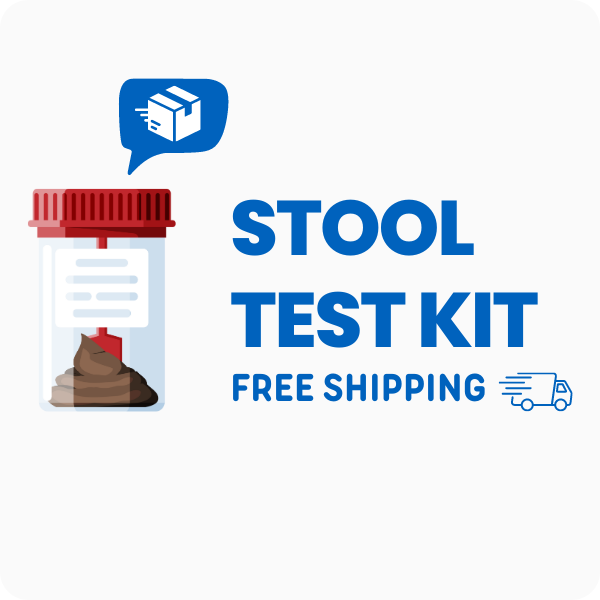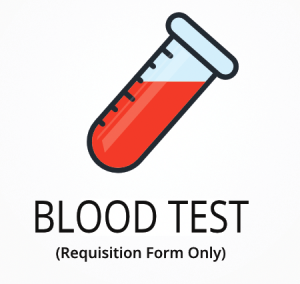Ordering the Comprehensive Stool Analysis with Parasitology by Great Plains (now MosaicDx)
The Comprehensive Stool Analysis with Parasitology by Great Plains (now MosaicDx) helps identify imbalances in gut bacteria, yeast, and parasites that may be linked to digestive problems, fatigue, and food sensitivities. This test also checks for inflammation, immune markers, and how well your body is breaking down and absorbing food. Interestingly, this test now includes 14 new pathogen markers, making it possible to detect a wider range of bacteria and viruses that may not show up in standard stool tests.
Ordering this test can help you and your healthcare provider find the root cause of symptoms that have not improved with basic changes. When you order, you get:
- Detailed analysis of 73 types of bacteria and 48 types of yeast and fungi
- Screening for 22 different parasites using advanced microscopy
- Evaluation of digestive function, including fat, muscle, and vegetable fiber breakdown
- Assessment of inflammation and immune response in the gut
- Personalized recommendations for prescription and natural treatments based on your results
Who Should Consider Digestive and Gut Health Testing
People who have ongoing stomach pain, bloating, or changes in bowel habits that do not improve with diet changes may benefit from this test. For example, someone who has tried removing gluten and dairy but still has diarrhea and fatigue could use this test to check for hidden infections or imbalances.
Ordering this test may also be helpful in these situations:
- Long-term constipation or diarrhea that does not respond to common remedies
- Unexplained weight loss or trouble gaining weight despite eating enough
- Frequent yeast infections or skin rashes that come back after treatment
- Children with ongoing stomach pain, picky eating, or poor growth
- People with autoimmune conditions who notice new digestive symptoms
This test can help pinpoint the cause of symptoms by checking for bacteria, yeast, and parasites, as well as how well your body digests food. Delaying this test may allow gut imbalances or infections to continue, which could make symptoms harder to manage over time. If you want to get clear answers about your digestive symptoms, consider ordering this test today.
How to Prepare for Digestive Pathogen and Microbiome Testing
Fasting is not required for this stool test, so you can eat and drink as usual before collecting your sample. Always follow any instructions your doctor or healthcare provider gives you to make sure your sample is collected and shipped correctly for the most useful results.
Labs Included When Ordering Your Comprehensive Stool Analysis with Parasitology by Great Plains
| Test Name | Reference Range | What This Test Measures | Low and High Levels of Comprehensive Stool Analysis with Parasitology |
|---|---|---|---|
| Bacterial Culture | |||
| Imbalanced and Dysbiotic Bacteria (73 species) | None detected | Checks for harmful bacteria that may cause digestive symptoms or disrupt gut balance. | High levels mean possible infection or imbalance causing symptoms.
Low levels mean no harmful bacteria detected. |
| Beneficial Bacteria (4 species) | Within lab-specific range | Measures healthy bacteria that support digestion and immune function. | High levels mean strong presence of good bacteria.
Low levels mean reduced support for digestion and immune defense. |
| Yeast and Fungal Culture | |||
| Yeast and Fungi (48 species) | None detected | Detects overgrowth of yeast or fungi that may cause bloating, gas, or other symptoms. | High levels mean possible yeast or fungal overgrowth.
Low levels mean no yeast or fungi detected. |
| Yeast (microscopy) | None seen | Looks for visible yeast cells under a microscope to confirm overgrowth. | High levels mean active yeast presence.
Low levels mean no visible yeast. |
| GI Pathogens – Multiplex PCR | |||
| Viruses (Adenovirus F40/41, Norovirus GI/GII, Rotavirus A) | Not detected | Screens for viral infections that can cause diarrhea and stomach upset. | High levels mean active viral infection.
Low levels mean no viral infection found. |
| Pathogenic Bacteria (Campylobacter, C. difficile, E. coli, Salmonella, Shigella, Vibrio cholerae) | Not detected | Detects harmful bacteria that can cause food poisoning or severe digestive symptoms. | High levels mean infection with specific bacteria.
Low levels mean no infection detected. |
| Parasitology (Microscopy) | |||
| Parasites (22 species) | None detected | Checks for parasites that may cause diarrhea, stomach pain, or nutrient loss. | High levels mean active parasitic infection.
Low levels mean no parasites found. |
| Digestion and Absorption Markers | |||
| Elastase | >200 | Measures pancreatic enzyme output to see if food is being digested properly. | High levels mean normal enzyme production.
Low levels mean possible pancreatic insufficiency. |
| Fat Stain | Negative | Checks for undigested fat in stool, which can signal poor fat absorption. | High levels mean fat malabsorption.
Low levels mean normal fat digestion. |
| Muscle Fibers | None to rare | Looks for undigested muscle fibers, which can show problems with protein digestion. | High levels mean incomplete protein digestion.
Low levels mean normal protein breakdown. |
| Vegetable Fibers | None to rare | Checks for undigested plant fibers, which can indicate digestive enzyme issues. | High levels mean possible enzyme deficiency.
Low levels mean normal digestion of plant foods. |
| Carbohydrates | Negative | Detects undigested sugars, which can point to enzyme problems or food intolerance. | High levels mean poor carbohydrate digestion.
Low levels mean normal sugar breakdown. |
| Inflammation Markers | |||
| Lysozyme | <600 | Shows inflammation in the gut lining, which can be linked to infection or immune response. | High levels mean active inflammation.
Low levels mean no sign of inflammation. |
| Lactoferrin | <7.3 | Detects inflammation, often seen in infections or inflammatory bowel conditions. | High levels mean possible inflammatory bowel disease.
Low levels mean no active inflammation. |
| White Blood Cells | None seen | Checks for immune cells in stool, which can signal infection or inflammation. | High levels mean infection or inflammation.
Low levels mean no immune response detected. |
| Mucus | None to rare | Looks for mucus, which can be a sign of irritation or inflammation in the gut. | High levels mean gut irritation or inflammation.
Low levels mean no mucus present. |
| Immunology | |||
| Secretory Immunoglobulin A (sIgA) | 510-2040 | Measures immune defense in the gut, showing how well your body protects against germs. | High levels mean active immune response.
Low levels mean weakened gut immunity. |
| Short Chain Fatty Acids | |||
| Acetate | 30-60 | Produced by good bacteria, helps keep the gut lining healthy and supports energy. | High levels mean increased fermentation or bacterial imbalance.
Low levels mean reduced beneficial bacteria activity. |
| Propionate | 9-19 | Another fatty acid from good bacteria, supports gut health and may affect inflammation. | High levels mean possible bacterial overgrowth.
Low levels mean low fiber intake or reduced good bacteria. |
| Butyrate | 8-20 | Supports gut lining repair and helps control inflammation. | High levels mean increased fermentation.
Low levels mean less support for gut lining. |
| Valerate | <2 | A minor fatty acid, can increase with certain bacterial imbalances. | High levels mean possible imbalance in gut bacteria.
Low levels mean normal or low fermentation. |
| Intestinal Health Markers | |||
| Red Blood Cells | None seen | Checks for blood in stool, which can signal irritation or injury in the gut. | High levels mean possible bleeding in the digestive tract.
Low levels mean no blood detected. |
| pH | 6.0-7.8 | Shows the acidity or alkalinity of stool, which can be affected by diet or bacteria. | High levels mean more alkaline stool, possible bacterial imbalance.
Low levels mean more acidic stool, possible fermentation issues. |
| Occult Blood | Negative | Detects hidden blood in stool, which can be a sign of irritation or inflammation. | High levels mean possible bleeding in the gut.
Low levels mean no hidden blood found. |
| Yeast (microscopy) | None seen | Confirms yeast presence by direct observation under a microscope. | High levels mean active yeast overgrowth.
Low levels mean no yeast detected. |
| Yeast Sensitivity | |||
| Fluconazole, Itraconazole, Ketoconazole, Nystatin, Berberine, Caprylic Acid, Goldenseal, Oregano, Tanalbit, Undecylenic Acid, Uva Ursi | Sensitive/Resistant | Shows which prescription and natural treatments may work best against detected yeast. | High resistance means treatment may not work.
Low resistance means treatment is likely effective. |
| Bacterial Sensitivity | |||
| Amoxicillin, Ampicillin, Augmentin, Ciprofloxacin, Trimeth-sulfa, Berberine, Black Walnut, Caprylic Acid, Cats Claw, Citrus Seed Extract, Goldenseal, Oregano, Uva Ursi | Sensitive/Resistant | Identifies which antibiotics or natural agents may be most effective for detected bacteria. | High resistance means less likely to respond to treatment.
Low resistance means more likely to respond to treatment. |
| Staphylococcus aureus Sensitivity | |||
| Benzypenicillin, Oxacillin, Tetracycline, Trimeth-sulfa, Vancomycin, Berberine, Black Walnut, Caprylic Acid, Cats Claw, Citrus Seed Extract, Goldenseal, Oregano, Uva Ursi | Sensitive/Resistant | Shows which treatments may work best if Staphylococcus aureus is found. | High resistance means harder to treat infection.
Low resistance means easier to treat infection. |
Reference ranges may change slightly as labs update their methods and standards. Always review your results with your healthcare provider for the most current interpretation.
Comprehensive Stool Analysis with Parasitology FAQ
Is there Comprehensive Stool Analysis with Parasitology testing near me?
This is a home test kit, so you can collect your sample locally and send it to the lab using the included shipping materials; check the draw location link at the top of the page for more details. For people with ongoing digestive symptoms, being able to collect the sample at home makes the process easier and avoids the stress of finding a nearby clinic.
How do I interpret the test results?
While your treating physician should review your results, we also offer a one-on-one test results review with our clinical team to help you understand your report and next steps.
What is the cost of the test?
The price listed for this test includes standard shipping to you and return shipping to the lab; draw fees may apply. Ordering this test can help you find out if gut infections or imbalances are causing your symptoms, so you can start targeted treatment sooner.
How often should I retest?
Retesting is usually recommended every 3 to 6 months if you are treating an infection or imbalance, or sooner if symptoms return. Repeating the test helps track changes and see if your treatment plan is working as expected.
How accurate is the test?
This test uses advanced culture, microscopy, and multiplex PCR methods for detecting bacteria, yeast, parasites, and viruses, with a specificity of 98% and sensitivity of 97%. TrueHealthLabs.com partners with CLIA-certified and CAP-certified laboratories to uphold rigorous testing standards for dependable results.
Important Notes
- This test can not be collected or mailed from New York State. Contact us with questions.
Medical Review Board
Reviewed by Jeff Donohue M.D. from Body Logic and Brady Hurst DC, CCCN. Written by True Health Lab’s team of editorial health contributors.
Disclaimer: This information is for educational purposes only and not intended as medical advice. Consult your healthcare provider for personalized guidance.
Why Customers Trust True Health Labs – What People are saying
Also rated 4.6 out of 5 based on 3452 ShopperApproved reviews- See all TrueHealthLabs.com reviews.









